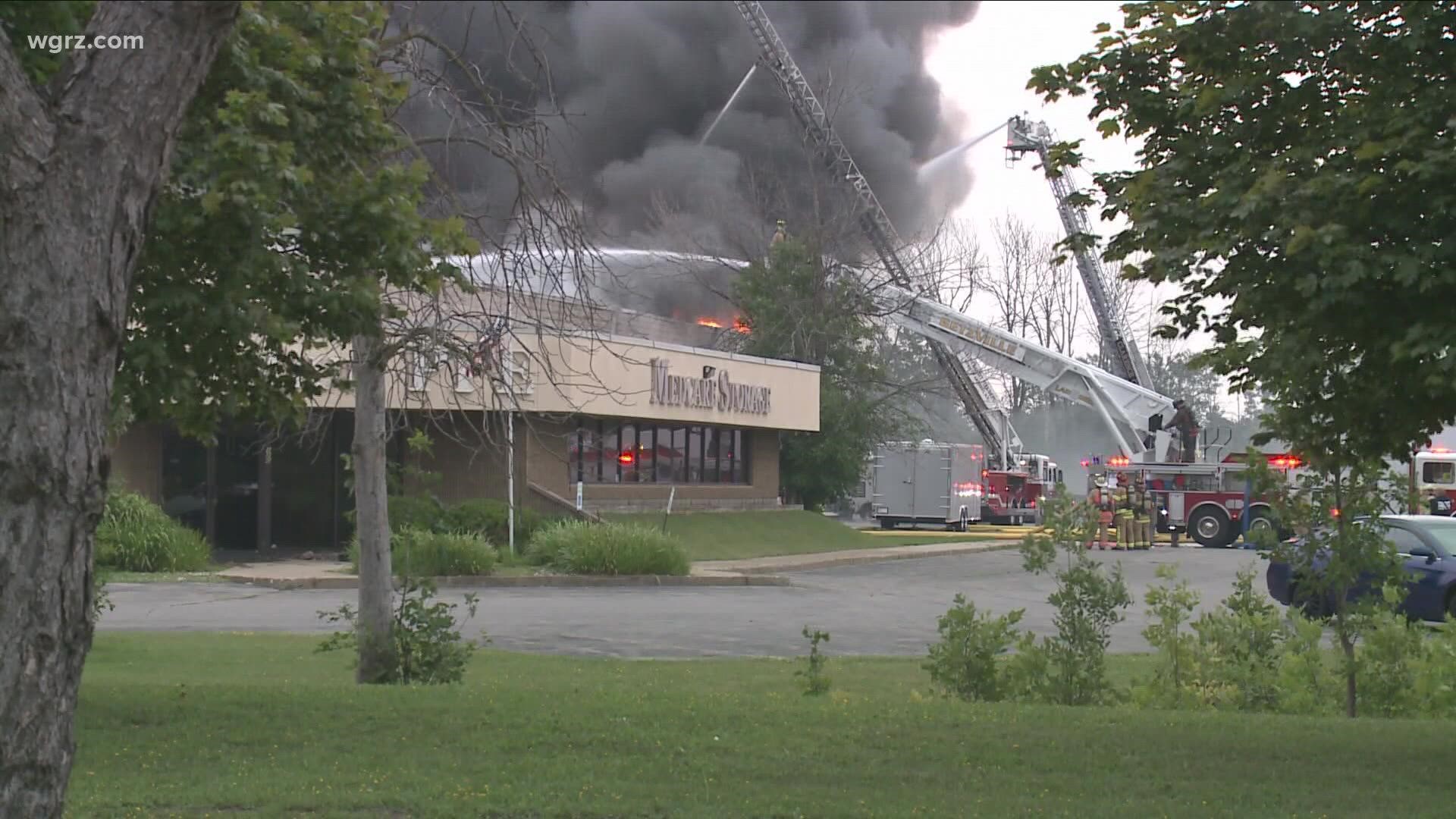AMHERST, N.Y. — When the fire at Premium PPE broke out on July 20, Amherst fire inspector John Pidgeon told WGRZ that "we are monitoring with the DEC and state agencies to make sure no hazard come up."
2 On Your Side has learned through a Freedom Of Information Law request that air, soil, and water tests conducted on July 21, a little more than 14 hours after the fire started, determined nearly three dozen "pollutants of concern" were detected at the site.
According to the documents obtained by WGRZ, the testing was conducted by John Richter, Pretreatment Coordinator of the Environmental Control Division at the EPA/NYSDEC.
In an email to state and federal officials, Richter says cyanide and dioxane "may have entered both the Town of Amherst Sewer Lateral System and the Town of Amherst Storm Water Collection system."
According to a spreadsheet of all chemicals detected at the site of the fire, 1.23 mg/L of cyanide were discharged into the sewer system, "slightly above town standards," Richter said in that email to state and federal officials.
As for the Dioxane, 20 ug/L were detected in a sewer discharge.
In a spill report filed by the NYSDEC, it was reported that resins and isocyanate were stored in the building for "blown-in insulation." The report also states that the owner of Premium PPE indicated that a shipping error resulted in "about 100 drums of resin and one drum of isocyanate" being stored on-site at the time of the fire.
Diesel and propane tanks were also located on the site of Premium PPE, according to the NYSDEC spill report
Some of the other chemical compounds and "pollutants of concern" detected in the tests were Benzene, Toluene, Phenol, Naphthalene, Mercury
In total, more than 150 chemical compounds were discovered at the site of the fire when tests were conducted on July 21.
While the report obtained by WGRZ cited concern about pollutants in the water, the Town of Amherst Supervisor Brian Kulpa said the town's water treatment facility handled it without issue.
"We have our own treatment plant and our sewer analysis and we were equipped to deal with removing toxins and pollutants from the water at our treatment plant," Kulpa said. "That's frankly why buildings have floor drains that go to a sanitary sewer system right so you wash this compound or these items into a sanitary sewer system in a circumstance like this and not trying to prevent it from getting into the groundwater."
Kulpa also applauded the efforts of first responders in containing runoff from the fire.
"The site did a good job of containment right so pollutants that did wash away from the building stayed on site the facility had appropriate drainage surrounding it," Kulpa said. "So that meant that that water didn't leach into our other into our bigger storm system."
Kulpa did say that air monitoring began immediately when fire companies responded to the scene. The tests conducted on July 21 occurred after the fire had been brought under control.
That immediate air monitoring allowed emergency responders to make the decision to activate an evacuation zone, due to known contaminants in the air.
"The area in the immediate evacuation, there was a risk, that's why it was evacuated," Kulpa said. "There was a risk in the evacuation area, beyond that air monitoring told us that there weren't risks for the public and then soil samples after the fact told us there was not a risk.
Dozens of fire companies and hundreds of firefighters from across Western New York responded to the fire on 120 Earhart Drive.
Last week, 2 On Your Side reported that the investigation into the cause of the fire was still underway. Additionally, the remnants of Premium PPE remain, as demolition of the site hasn't begun due to insurance companies are conducting a variety of their own investigations.
As for any lingering health effecting responding firefighters may or may not be experiencing, Kulpa couldn't provide information about that.

